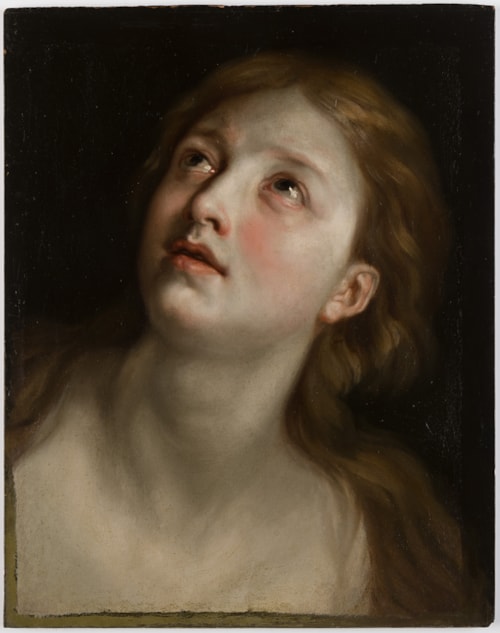
Anton Raphael MENGS
Aussig 1728 - Rome 1779
Biography
Born in Bohemia, Anton Raphael Mengs was the son and pupil of the Danish painter Ismael Mengs, the court painter at Dresden. He grew up there, together with his two sisters (who were also artists), before moving with the rest of his family to Rome in 1741, when he was twelve years old. Although he returned occasionally to Dresden, to work at the Saxon court, he was to spend most of the rest of his life in Italy, converting to Catholicism and becoming a leading figure in the artistic community in Rome. Mengs received several important portrait commissions, including many from British travellers to Italy, and also painted a number of significant public works. Alongside Anton von Maron, he painted the ceiling fresco on the nave of the church of Sant’ Eusebio between 1757 and 1758, while his best-known work is the Parnassus ceiling in the Villa Albani, completed in 1761.
That same year he travelled to Madrid, where he had been appointed pintor de camára to the Spanish King Charles III, and he remained in Spain for most of the next decade. Mengs was back in Rome by 1771 and the following year was elected principe of the Accademia di San Luca. After painting an altarpiece for Saint Peter’s and decorating the Stanza dei Papiri in the Vatican Library in 1772 for Pope Clement XIV, he returned to Madrid in 1774. Two years later, on the grounds of poor health, the artist left the Spanish court for good and retired to Italy. Mengs was also an important writer and theorist on art, as well as an occasional art dealer, and by the time of his death was arguably the most celebrated painter in Europe. As the 18th century Italian writer and antiquarian G. L. Bianconi wrote of the artist, a year after his death, ‘There has never been a painter in all the world more sought after by rulers than Mengs; it seemed that they could not talk to him without losing their hearts to him, and conferring commissions.’


